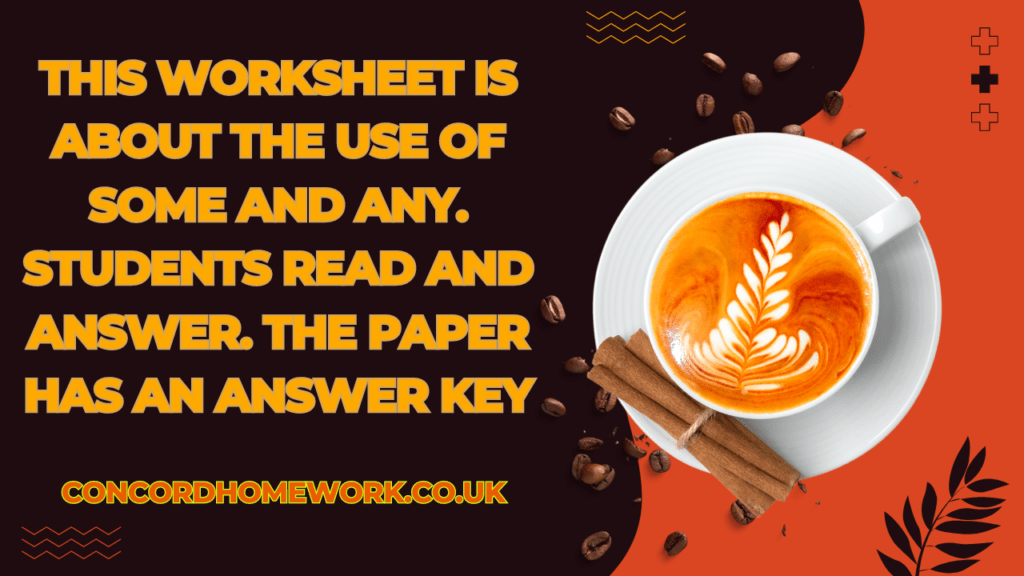Complete the sentences with some or any.
Complete the sentences with some, any, a(n) or no. Listen and check.
This worksheet is about the use of some and any. Students read and answer. The paper has an answer key.
Let’s dive into the world of “Some”, “Any”, and articles with “a”, “an”, or nothing in English grammar. 🎩📚
Articles: “A” and “An”
Articles are small but mighty words that help us specify whether we’re talking about a specific or non-specific thing. They come in two flavors:
- “A” (or “An”): Used for non-specific singular nouns.
- Example: “I saw a cat on the roof.”
- Here, we’re not talking about a particular cat; it could be any cat.
- “The”: Used for specific nouns (both singular and plural).
- Example: “I saw the cat that chased the mouse.”
- We’re referring to a specific cat—the one that chased the mouse.
Quantifiers: “Some” and “Any”
Quantifiers are like seasoning for nouns—they add flavor! Let’s focus on “some” and “any”:
- “Some”:
- Used with positive sentences and questions when we’re talking about an indefinite quantity or part of a whole.
- It’s like saying, “Hey, there’s a bunch of stuff, but I don’t need to specify exactly how much.”
- Examples:
- “I have some bananas.” (Indefinite quantity)
- “Would you like some coffee?” (Part of a whole)
- “Any”:
- Used with negative sentences and most questions.
- It implies a neutral quantity—not too much, not too little.
- Examples:
- “I don’t have any apples.” (Neutral quantity)
- “Do you have any siblings?” (Neutral inquiry)
Articles with Countable Nouns
Countable nouns are things we can count (like bananas 🍌). Let’s break it down:
| Situation | Article/Quantifier | Example |
|---|---|---|
| Singular noun | A or An | “I have an apple.” |
| “I don’t have an orange.” | ||
| Plural noun | Some | “I have some bananas.” |
| “She has some pens.” | ||
| Any | “I don’t have any pencils.” | |
| “Do you have any cousins?” |
Special Cases for Plural Nouns
- Add -s after -x, -sh, -ss, -ch, and sometimes after -o:
- Example: “box” → “boxes,” “dish” → “dishes.”
- Change -y to -ies:
- Example: “party” → “parties.”
Irregular Plurals
Some plural nouns don’t follow the usual rules:
- “Some women” (not “womans”)
- “Three children” (not “childs”)
Remember, articles and quantifiers make our language colorful and nuanced. So next time you’re munching on some bananas, appreciate the grammar magic happening behind the scenes! 🎩🍌
What should our team prepare for you?
What topics do you need?
“Thank you for taking the time to explore this topic with us! We hope you found the information helpful and insightful. Have any thoughts, questions, or additional examples to share? We’d love to hear from you in the comments below!
Don’t forget to spread the word by sharing this blog with your friends, family, and colleagues. Together, let’s continue to learn, grow, and connect with the world around us. Happy reading and sharing!”

